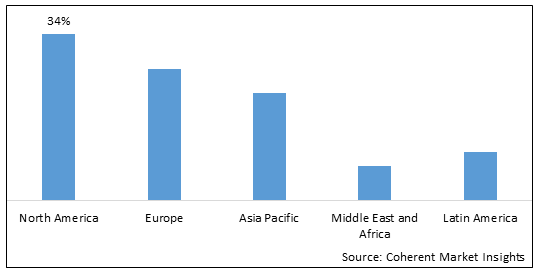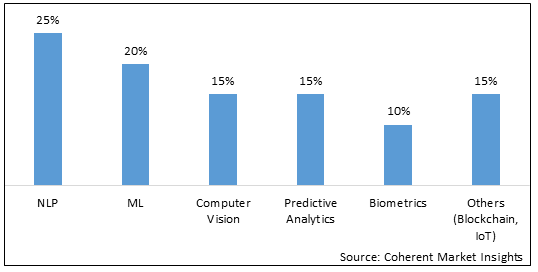Virtual Shopping Assistant Market is estimated to be valued at USD 1,103.9 Mn in 2025 and is expected to reach USD 8,083.6 Mn in 2032, exhibiting a compound annual growth rate (CAGR) of 32.9% from 2025 to 2032. Virtual shopping assistants are AI-powered conversational agents that provide customized assistance to shoppers for products and services. They engage with customers through chat, voice, and avatar interfaces across platforms like websites, mobile apps, messaging platforms, and IoT devices. These assistants help shoppers navigate product selections, provide personalized recommendations, answer questions, simplify payments, and deliver post-purchase customer support.
The key advantages of virtual shopping assistants include 24x7 availability, the ability to handle high volumes of customer queries, and deliver personalized shopping experiences. The growth in this market is driven by factors like the increasing use of conversational commerce, rising demand for personalized shopping, and the growing adoption of AI and NLP.
The virtual shopping assistant market is segmented by interaction mode, platform, technology, industry vertical, application and region. By interaction mode, the market is segmented into chatbots, messengers, websites, mobile apps, voice assistants, avatars, and others. The chatbots segment accounts for the largest market share owing to the high deployment of chatbots by retailers to automate consumer engagement.
Virtual Shopping Assistant Market Regional Insights
- North America is expected to be the largest market for virtual shopping assistant during the forecast period, accounting for over 34% of the market share in 2025. The growth of the market in North America is attributed to the early adoption of conversational AI and increasing investments in retail tech.
- Europe is expected to be the second-largest market for virtual shopping assistant, accounting for over 27% of the market share in 2025. The growth of the market in Europe is attributed to the rising demand for Omni channel shopping experiences.
- Asia Pacific is expected to be the fastest-growing market for virtual shopping assistant, with a CAGR of over 22% during the forecast period. The growth of the market in Asia Pacific is attributed to the rapidly expanding e-commerce industry and increasing smartphone penetration.
Figure 1. Global Virtual Shopping Assistant Market Share (%), by Region, 2025

To learn more about this report, Download Free Sample
Virtual Shopping Assistant Market Drivers:
- Rising adoption of conversational AI: Conversational AI and natural language technologies are seeing increased adoption across industries. Retailers are leveraging conversational assistants and chatbots to automate customer support and deliver personalized shopping guidance. Virtual shopping assistants interact with customers via natural conversations and understand context and user intent to provide relevant recommendations. They can handle large volumes of customer queries 24/7 and lower operational costs. The improving capabilities of NLP and voice recognition are resulting in more human-like conversations that drive user engagement. This is a key driver boosting the uptake of virtual shopping assistants. For instance, in October 2022, Bank of America introduced its AI-powered assistant, Erica, which has served more than 10 million users since its launch.
- Growing demand for self-service shopping experiences: Consumers increasingly prefer self-service channels for faster issue resolution and on-demand assistance. Virtual shopping assistants enable shoppers to navigate product searches, compare options, and complete transactions, and access support independently without relying on a live agent. Younger demographics like millennials and Gen Z are more comfortable with transacting through conversational interfaces. The round-the-clock availability and ability to deliver hyper-personalized recommendations are making virtual shopping assistants more popular for self-service shopping. For instance, according to a 2022 IBM study, 71% of consumers either already use self-checkout or express a desire to do so. The same research revealed that 26% of consumers are interested in an expanded array of self-service choices, encompassing touchscreen displays and self-checkout solutions.
Virtual Shopping Assistant Market Opportunities:
- Expansion into emerging markets: Emerging economies like India, Brazil, Indonesia and others are seeing rising internet and smartphone adoption. E-commerce growth, expanding middle-class populations, and the adoption of online shopping in these markets are creating opportunities for virtual shopping assistant solutions. Localization of solutions with multilingual and voice support can help expand their foothold. Companies can tap into the large consumer base through culturally relevant shopping experiences delivered by smart virtual assistants. For instance, In India, an emerging market experiencing a swiftly expanding e-commerce sector, According to Amazon.com, Inc. is a multinational American technology company that specializes in e-commerce, cloud computing, online advertising, digital streaming, and artificial intelligence. It has been actively making substantial investments. The company has pledged more than US$ 5 billion for its Indian operations and has introduced numerous features specifically designed for the Indian market, including support for the Hindi language, in order to better serve local customers.
- Integration of Emerging Technologies: Integrating virtual shopping assistants with innovations like IoT, AI, and AR/VR can create more personalized and immersive shopping experiences. Artificial Intelligence (AI) and Machine Learning (ML) technologies can be used to automate routine tasks, improve decision-making processes, and provide personalized experiences to customers. In the healthcare sector, AI can be used to predict diseases and suggest treatments. IoT can be used to improve operational efficiency and provide real-time insights. Augmented Reality (AR) and Virtual Reality (VR), these technologies can be used to provide immersive experiences. For instance, a report by Statista predicts that the global market for AI will reach $126 billion by 2025.
- SME Customer: Virtual shopping assistants have gained traction among large retailers. However, small and medium businesses also present a significant opportunity. Small and Medium Enterprises (SMEs) are a vital part of the economy, providing a significant source of employment and contributing to overall economic growth. The integration of emerging technologies presents numerous opportunities for SMEs to improve their operations, enhance customer experiences, and drive growth. SMEs can use e-commerce platforms to sell their products or services online, thereby reaching customers beyond their geographical location. For instance, in 2022, according to the report from the Ministry of Textiles, the Indian handicraft industry has been experiencing a consistent annual growth rate of 20%.
Virtual Shopping Assistant Market Report Coverage
| Report Coverage | Details | ||
|---|---|---|---|
| Base Year: | 2024 | Market Size in 2025: | USD 1,103.9 Mn |
| Historical Data for: | 2020 To 2024 | Forecast Period: | 2025 To 2032 |
| Forecast Period 2025 to 2032 CAGR: | 32.9% | 2032 Value Projection: | USD 8,083.6 Mn |
| Geographies covered: |
|
||
| Segments covered: |
|
||
| Companies covered: |
Anthropic PBC, Synthesia Limited, Observe.AI, Avaamo, Cognigy, SoundHound AI Inc., Luka, Inc. Pypestream Inc,, Mobisoft Infotech, EdgeVerve Systems Limited, Nuance Communications, Inc., Ada, and Kore.ai. |
||
| Growth Drivers: |
|
||
| Restraints & Challenges: |
|
||
Uncover macros and micros vetted on 75+ parameters: Get instant access to report
Virtual Shopping Assistant Market Trends:
- Advancing Conversational AI: Natural language processing, speech recognition and generation underlying conversational AI assistants are advancing rapidly. Solutions can understand complex intent, have multi-turn conversations and handle domain-specific vocabularies. Contextual awareness and personalization are improving. Advances like sentiment analysis, intent prediction, dialogue management and code-free customization will expand virtual assistant capabilities and drive wider adoption. Conversational AI can be used to provide financial advice and handle transactions. For instance, in 2022 according to Consumer Financial Protection Bureau (CFPB), around 37% of the U.S. population is believed to have engaged with a bank's chatbot, and this number is expected to increase. The evolution of chatbot technology has prompted banks to shift from basic, rule-based chatbots to more advanced technologies, including large language models (LLMs) and those marketed as "artificial intelligence
- Integration of Voice Commerce: Voice-based interfaces are gaining prominence across consumer devices. Virtual assistants that support voice interactions enable hands-free shopping by answering customer queries, recommending products, comparing options and assisting purchases. Voice makes the experience more natural with multi-turn conversations that can use contextual cues. Voice commerce integration will make virtual shopping assistants more ubiquitous. Customers can simply use voice commands to order products from Amazon through Alexa, without having to manually search and select products. For instance, in August 2023, Amazon reported a 21% rise in the utilization of multilingual mode on Alexa in India, with nearly half of Echo users taking advantage of this feature.
Virtual Shopping Assistant Market Restraints:
- Data Privacy and Security Concerns: The collection of massive consumer data required to deliver personalized recommendations raises privacy concerns. Lack of transparency around data practices makes customers wary of sharing information with virtual assistants. Data breaches exposing consumer data could erode trust and inhibit adoption. Addressing apprehensions through responsible data collection, encryption, and transparency measures is crucial.
Counterbalance: Encouraging users to create strong, unique passwords and change them regularly can help protect their data. Two-factor authentication can provide an additional layer of security.
- High Initial Costs and Complexity: High initial costs and complexity are common restraints when it comes to the adoption of new technologies or systems. The upfront cost of implementing new technologies can be significant, especially for small and medium-sized enterprises (SMEs). This includes the cost of the technology itself, as well as associated costs such as installation, training, and maintenance.
Counterbalance: Look for cost-effective solutions that offer a good return on investment. This could include open-source software, cloud-based solutions, or technologies that can automate tasks and improve efficiency. Also, consider the long-term cost savings that the technology can bring, such as reduced labor costs or increased productivity.
Recent Developments
Key Development
- In March 2022,AI utilizes a state-of-the-art 30 billion-parameter large language model (LLM) and Generative AI engine in the contact center industry launched Assist CX, an AI-powered virtual assistant for customer support teams. It provides real-time coaching and feedback to agents during calls.
- In January 2022, SoundHound AI, Inc., established in 2005, specializes in the development of technologies for audio and speech recognition. The company's expertise encompasses speech recognition, natural language comprehension, sound recognition, and search capabilities, introduced Voice AI Assistant for Retailers to deliver hyper-personalized shopping experiences. It leverages conversational AI and product search.
Key Strategic Initiatives
- In October 2022, Yellow Messenger Yellow.ai, formerly known as With its headquarters located in San Mateo, California, Yellow Messenger is an enterprise conversational AI platform that was established in 2016. Using its voice and chat capabilities, the artificial intelligence platform powers conversational experiences on Shopify stores for both employees and customers. Shopify Inc. is a multinational Canadian e-commerce company with its headquarters located in Ottawa, Ontario.
Figure 2. Global Virtual Shopping Assistant Market Share (%), by Technology, 2025

To learn more about this report, Download Free Sample
Top Companies in Virtual Shopping Assistant Market
- Anthropic PBC
- Synthesia Limited
- Observe. AI
- Avaamo
- Cognigy
- SoundHound AI Inc.
- Luka, Inc.
- Pypestream Inc.
- Mobisoft Infotech
- EdgeVerve Systems Limited
- Nuance Communications, Inc.
- Ada
- Kore.ai Inc
Definition: The virtual shopping assistant market refers to the industry providing conversational AI-based digital shopping assistants that interact with consumers to provide personalized recommendations and shopping assistance across platforms like websites, mobile apps, messaging, and voice assistants. These AI assistants leverage technologies like NLP, ML and computer vision to understand user intent, product attributes and engage via chat, voice and avatars to guide users in product discovery and purchases.
Few other promising reports in Virtual Shopping Assistant Industry
Share
Share
About Author
Ankur Rai is a Research Consultant with over 5 years of experience in handling consulting and syndicated reports across diverse sectors. He manages consulting and market research projects centered on go-to-market strategy, opportunity analysis, competitive landscape, and market size estimation and forecasting. He also advises clients on identifying and targeting absolute opportunities to penetrate untapped markets.
Missing comfort of reading report in your local language? Find your preferred language :
Transform your Strategy with Exclusive Trending Reports :
Frequently Asked Questions
Select a License Type
EXISTING CLIENTELE
Joining thousands of companies around the world committed to making the Excellent Business Solutions.
View All Our Clients




